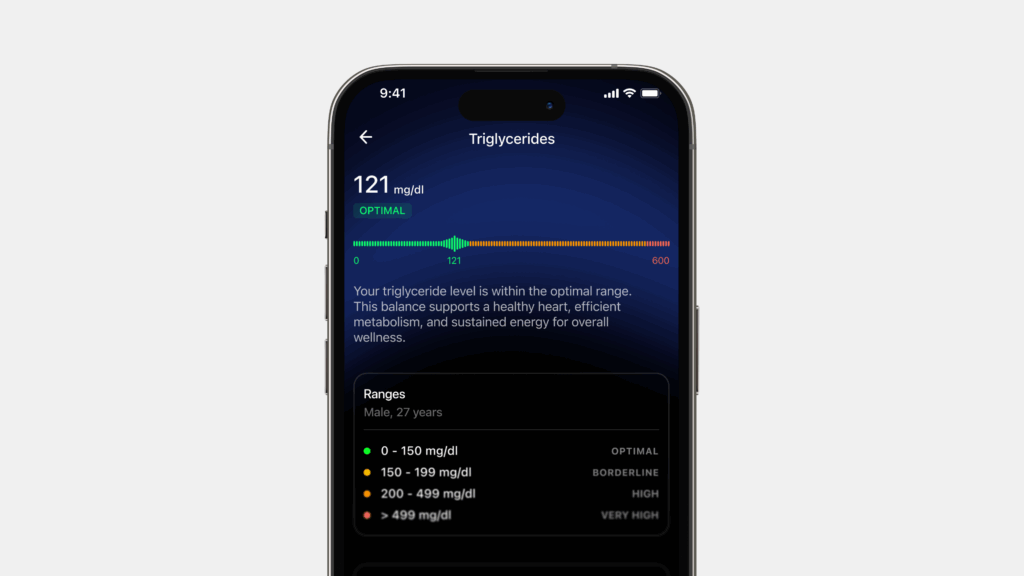Did you know that a hummingbird has the highest metabolic rate among all animals with a backbone. Research at John Hopkins Medicine suggests that with a wing buzzing beat of 60 to 80 beats per second, these birds require the human equivalent of almost 150,000 calories every day. Darting from flower to flower, they consume a dangerously high quantity of sugary nectar. Their high blood sugar levels would be regarded as diabetic in humans but thanks to their high-speed flights, they don’t suffer the biological pitfalls that humans generally would – obesity and diabetes. The extraordinary metabolism of hummingbirds serves as a minefield of studies for understanding the process in humans. So, what is metabolism?

Highlights
- The body relies on metabolism to carry out all its functions – whether it’s storing or burning fat, regulating sugar levels, or keeping your neurons firing,
- Our metabolism can be impacted by a host of factors from our mental health, diet, exercise, and lifestyle, to genetics, gender, and body composition,
- Hormonal disorders like hypothyroidism or hyperthyroidism can affect metabolism.
What is Metabolism?
Metabolism is a series of life-sustaining chemical processes that enables the transformation of the chemical energy stored in molecules into energy that can be used for cellular processes. In simpler words, it is a series of chemical processes in each cell transforming the calories we eat into fuel to keep us alive. These processes sustain life, and everyday functioning, including breaking down food and drink to energy and building or repairing our bodies. We use this energy to think, rest and move.
Casual conversations about metabolism are usually confined to the binary of weight gain and weight loss but it is the cornerstone of our vitality. The body is continually storing and consuming energy (from the food you consume) to maintain optimal health. It is important to remember that metabolism is not a one-size-fits-all approach.
What is the measure of metabolism?
The measurement of the volume of oxygen consumed by your body for fundamental bodily functions like breathing, circulation and kidney function is the measure of metabolism. Our bodies use energy in three distinct ways.
Basal Metabolic Rate(BMR):
BMR is the amount of energy your body burns at rest on a daily basis. Even when you’re doing nothing, your body is making your heart pump blood through your veins, maintaining body temperature or your kidney function. It can be precisely measured in a lab setting.
RMR or resting metabolic rate is BMR without the calories for exercise or heavy activity and includes energy expended for basic daily activities. It is energy expenditure during a normal resting or non-exercising state.
The BMR accounts for approximately 60 to 80 percent of the daily energy expenditure. The normal BMR for a healthy man is around 7,100 kJ (kilojoules) per day while the average BMR for a healthy woman is around 5,900 kJ per day.
Thermic Effect of Food(TEF)
It is the energy required for digestion, absorption, and disposal of ingested nutrients. TEF uses 10% of energy. It is defined as ‘the increase in metabolic rate after ingestion of a meal’. Different foods raise the metabolic rate by differing amounts. For example, fats raise the BMR 0–5 per cent, carbohydrates raise the BMR 5–10 per cent and proteins raise the BMR 20–30 per cent. Spicy foods (foods with spices like chilli, horseradish and mustard) may have a substantial thermic effect.
Activity Energy Expenditure (AEE)
Energy used for activity is the most variable component of our metabolic rate. It includes non-exercise activity thermogenesis (NEAT) and exercise. NEAT is everything that we do that is not sleeping, eating, or sports-like exercise. It is the energy expended in daily tasks like standing, walking, typing, cooking, gardening, and even fidgeting. The energy expenditure of the muscles makes up only 20 % or so of total energy expenditure at rest, however, during strenuous exercise, it can increase to 50% and more.
Sleeping Metabolic Rate:
SMR refers to the energy expended during sleep. Sleeping metabolic rate (SMR), similar to BMR, is approximately 60% of the total EE. According to Dr. Michael Breus, a sleep specialist, author and expert, glucose metabolism starts to increase in the second half of the night when you enter REM (Rapid Eye Movement) sleep.
No two Persian rugs are known to have the same design or motifs. Much like an intricate Persian carpet, metabolism involves complex molecules and interrelated pathways. The metabolic rate varies from person to person. This is the rate at which the body expends energy and burns calories.
Anabolism and Catabolism
Metabolism does not just break down molecules into energy but also brings together molecules to aid the growth and repair of cells. These two processes of metabolism are Catabolism and Anabolism. The body regulates both processes carefully to make sure they remain in balance.
Catabolism – Breaks down
Catabolism breaks larger structures like proteins, fats or tissues down into smaller units such as cells or fatty acids. Take digestion for instance. The food we consume (carbohydrates, proteins, and dietary fats) is broken down into simpler forms to provide energy to the body. Catabolism will disintegrate a piece of bread into simple nutrients the body can use, like glucose (blood sugar).
The 3 stages of Catabolism are:
- Stage of Digestion – Large organic molecules like proteins, lipids and polysaccharides are digested into their smaller components outside cells.
- Stage of Energy Release – The disintegrated molecules are taken up by cells and converted to smaller molecules, usually acetyl coenzyme A (acetyl-CoA), which releases some energy.
- Stage of Energy Storage – The released energy is stored for basic building blocks needed for growth and repair.
Anabolism – Builds up
Anabolism is the opposite of catabolism. It bonds smaller units like nutrients, cells or amino acids together. Anabolism focuses on growth and building. It is a set of metabolic pathways that organize and construct small, simple molecules into large complex ones. Examples of anabolism include bone growth and mineralization, and muscle mass build-up. When your body is trying to heal a wound, anabolism adds tissue and structures around that wound.
1. Metabolism and Body Weight
You have heard this time and again, that a good diet and exercise plan is essential to ideal body weight. However, they too are affected by catabolism and anabolism processes of metabolism. When we eat food, our body breaks it down, releasing energy, which is stored in molecules of adenosine triphosphate (ATP) in the body. ATP is considered to be “the energy currency of life.” The energy stored in ATP is the primary fuel for all anabolic reactions. Catabolism creates the energy that anabolism uses for synthesizing hormones, enzymes, sugars, and other substances necessary for cell generation, reproduction, and tissue repair.
Our body weight is the outcome of catabolism minus anabolism – the amount of energy we release into our bodies (catabolism) subtracted by the amount of energy our bodies use up (anabolism). Eating more than we need for daily anabolism results in the excess energy stored as fat or glycogen in the muscles and liver. Glycogen is the primary storage form of glucose in the body. Generally speaking, being overweight is an outcome of the body storing excess energy as fat, however, sometimes hormonal problems may affect metabolism, which in turn may cause weight issues.
2. Slow Metabolism is not a life sentence
Our genes carry the possibilities of shaping the differences in metabolism among humans. According to the set point theory, our body tries to maintain our weight within a specific range, referred to as one’s set point. One’s genetic makeup determines this range. But inheriting a slow metabolism is not a life sentence. Director of the Center for Human Nutrition at UCLA, Zhaoping Li puts it in an interesting way, “Genetics loads the gun, environment pulls the trigger.” It’s possible to optimise your metabolism.
Our metabolism can be impacted by a host of factors from our mental health, diet, exercise, and lifestyle, to genetics, gender, and body composition. Let’s understand how they affect your metabolism and what you can do about it.

3. Poor mental health and stress
Have you noticed that when you are feeling very low, you don’t have the energy to do anything? In fact, people who have depression and anxiety find it even more difficult to get out of bed. This isn’t laziness, but an outcome of a compromised metabolism amongst other factors.
Anxiety and stress can impact metabolism. A 2015 study published in the journal Biological Psychiatry found that stress causes a decrease in calorie burning following a high-fat meal. Scientists have also discovered that metabolic disturbances are linked with major depressive disorders – evidence of the tremendous effect metabolism has on all aspects of your well-being.
When you’re under stress, your body responds by releasing a number of hormones. Cortisol taps into your energy stores and increases sugars (glucose) in the bloodstream to supply your body with the energy it needs to react. This process burns calories and increases your metabolism. However, cortisol is also considered a catabolic hormone, which means it breaks down muscle for energy. So, while the stress may at first increase your metabolism, the loss of muscle — which is another way your body burns calories — may eventually cause an overall decrease in your metabolism. Muscle breakdown from one stressful incident may not have much of an effect on your metabolism, but long-term chronic stress might.
It’s important to note that while intense stress is associated with suppression of feeding and reduction of weight, chronic stress can lead to overeating, increases in visceral adiposity and weight gain.
Take a break from your stressful routines. Planned breaks are essential to relieve stress. Restful activities can include yoga, meditation, tai-chi, listening to soothing music, spending time in nature, and taking a vacation. According to Harvard Health, deep abdominal breathing stimulates full oxygen exchange, slows the heartbeat and lowers or stabilizes blood pressure. There are different ways of deep breathing such as diaphragmatic breathing, abdominal breathing, belly breathing, and paced respiration. It activates the parasympathetic nervous system responsible for the rest and digest mode.
When metabolism functions as it should, you’ll feel energized throughout the day. You won’t feel fatigued. It becomes easier to gain muscle mass and lose fat because your body sends the right hormone “signals” to your metabolic system. A well-balanced metabolism means your mood will be brighter. Know how deep breathing lowers blood sugar.
4. Good Quality sleep lead to better Metabolism
We are increasingly becoming a sleep-deprived society. Whether it’s long hours at work or an addiction to social media and streaming websites, we are sleeping less and less. Good quality sleep is essential for the smooth functioning of almost every organ in our body. Sleep performs the function of housekeeping as it removes toxins in your brain that build up while you are awake. Poor sleep may disrupt these important biochemical processes in the body.
Sleep is also intricately connected to various hormonal and metabolic processes in the body and is important in maintaining metabolic homeostasis (seamless transition between periods of nutrient availability and nutrient scarcity, or in simple terms, waking hours when you eat and sleeping hours when you fast).
Growing evidence indicates that sleep loss and sleep disorders cause metabolism impairments. Studies have shown that sleep deprivation can alter glucose metabolism and affect hormones that are involved in regulating metabolism. Specifically, it can lead to decreased levels of leptin, a hormone that inhibits hunger and regulates energy balance, and increased levels of ghrelin, a hormone that increases appetite also called the hunger hormone.
5. Your diet can alter your metabolism
Nutrients serve as the building blocks for the hormones that regulate metabolism. If you have a well-balanced diet – you’re getting the nutrients you need and in the right quantities – then your metabolism will most likely function properly. However, say you’re eating lots of foods that are high in sugar, then this excess sugar will disrupt your metabolism and put you at risk of developing metabolic diseases.
High fibre foods, proteins and iodine-rich foods are some of the thermic foods that support a healthy metabolism. Protein-rich foods like meat, fish, eggs, dairy, legumes, nuts, and seeds could help increase your metabolism for a few hours because they require your body to use more energy to digest them. The minerals iron and selenium are required for the optimum functioning of your thyroid gland, which regulates your metabolism. Include selenium- and iron-rich foods like meat, seafood, legumes, nuts, and seeds in your daily diet. As mentioned before, eating these foods in the right quantity is equally important for good metabolic health.
6. Exercise can boost your metabolism
When it comes to boosting your metabolism, exercise is your best bet.
According to a new study, exercise is incredibly effective in converting food into energy and burning fat. Researchers measured about 200 metabolites—the substances produced during metabolic processes, which signal how the metabolism responds to exercise—in the blood of 52 young male soldiers before and after an intensive 80-day strength and aerobic training program. The study found dramatic changes in many metabolites. These changes indicate that consistent exercise caused the muscles to use far more fuel—predominantly fat—than previously thought. Ketone bodies—which are compounds produced when fats are metabolized—and fatty acids—like saturated and unsaturated fats—were dramatically decreased in circulation, as a result of more uptake into the muscles. This helps the body use the protein more effectively, and that leads to better vascular function and fat loss over time.
Even if your work schedule doesn’t allow spending time at the gym or exercising every week, you could use these creative ways to up your NEAT (Non-exercise activity thermogenesis) score.
10 ways to increase your NEAT Exercise
- Take the stairs
- Go for a walk around your building
- Help with household chores
- Sit on an exercise ball.
- Park your car far away
- Stand up often
- Don’t eat lunch at your desk
- Stretch at your desk
- Pace while talking on the phone
- Walk to a co-worker’s desk instead of emailing or calling them
These small movements can make a big difference. As little as 100 calories each day translates to approximately 5 kgs lost in a year; 200 calories equals the loss of 10kgs, without even breaking a sweat.
EPOC (Exercise Post Oxygen Consumption) is the rise in metabolic rate after an exercise ends. It refers to the amount of oxygen required to restore your body to its normal state after exercise. The total calories burned during high-intensity exercise have been found to be greater in EPOC than with continuous exercise. Research also suggests that intense exercise boosts communication between skeletal muscles and fat tissue. This helps in fine-tuning metabolism and improving performance.
7. Hormonal Imbalances affect your metabolism
Hormones are the messengers that tell your body what functions to perform. They also trigger anabolism and catabolism. Catabolic hormones are often triggered under stress. They include adrenaline, cortisol, glucagon and cytokines. The anabolic hormones are responsible for the growth and tissue repair and include estrogen, testosterone, insulin and human growth hormone. Any interruption to your hormones, like thyroid conditions, may also disturb these processes and the overall metabolism. Also, with age men produce less testosterone and women produce less estrogen. Both these hormones are involved in anabolic processes that consume energy. This is one of the reasons why it becomes difficult to lose weight as you get older.
There are hormonal disorders of metabolism that can affect body weight, such as hypothyroidism or hyperthyroidism. Hypothyroidism is the condition where the thyroid gland does not release enough hormones, lowering the body’s level of energy use. People with hypothyroidism are prone to gaining weight and are advised to follow a very strict regimen of diet and exercise to maintain a stable weight. The opposite takes place with hyperthyroidism, a disorder in which the thyroid gland releases larger quantities of hormones than necessary and speeds the metabolism. Some of the symptoms of hyperthyroidism include increased appetite and weight loss.
8. Aging can affect metabolism
You may have probably noticed that your elder parents no longer eat the same amount of food that they ate when they were younger. They are also less active and less energetic. The reason for this is that metabolism tends to slow with age. As we grow older metabolic processes operate less efficiently. Our bodies do not metabolize nutrients from food as effectively, which can cause blood glucose levels to be high, especially post-meals.
Anabolic processes such as building muscle protein become less efficient, so it’s more difficult to gain muscle mass as we get older. In fact, after age 50, adults who do not exercise lose an average of 0.4 pounds of muscle mass each year. This loss of muscle with age is known as sarcopenia and can lead to fractures and weakness. Sarcopenia also slows down your metabolism.
Latest research contests the widely held belief that our metabolism drastically diminishes during our adult lives. Researchers found that metabolism crests around age 1. At this time, babies reportedly burn calories 50 percent faster than adults, and then metabolism dips approximately 3 percent annually till the age of 20 years. From there, metabolism plateaus until about age 60 and it begins to diminish languidly again, by less than 1 percent annually.
The good news however is that there are a number of healthy lifestyle strategies that have been scientifically proven to offset some of these effects of ageing on metabolism. Eating protein-rich foods, eating less sugar, exercising every day, having a good sleeping routine and meditating to keep stress away, all help in keeping an ageing metabolism revved up.
Conclusion
Metabolism is your life force. The body relies on metabolism to carry out all its functions – whether it’s storing or burning fat, regulating sugar levels, or keeping your neurons firing – so metabolism has an enormous impact on your health. The process of metabolism is further broken down in anabolism and catabolism. Anabolism revolves around growth and building and Catabolism breaks down molecules for energy consumption. Hormonal disorders like hypothyroidism or hyperthyroidism can affect metabolism. Our body’s basal metabolic rate is calculated according to the energy consumed at rest, while breaking down food, doing physical activity and even while sleeping. There are many factors that affect our metabolism. Reducing stress levels, having good quality and quantity of sleep, regular physical activity and good nutrition can help maintain and balance your metabolism.
In closing, every person has a different BMR and hence the outcome of diet and exercise is different for different people. However, by understanding how metabolism works, we can influence it through personalised diet, exercise regime and wellness practices and aim to keep ourselves fit and active, even as we age.
Disclaimer: The contents of this article are for general information and educational purposes only. It neither provides any medical advice nor intends to substitute professional medical opinion on the treatment, diagnosis, prevention or alleviation of any disease, disorder or disability. Always consult with your doctor or qualified healthcare professional about your health condition and/or concerns and before undertaking a new health care regimen including making any dietary or lifestyle changes.
References
- https://courses.lumenlearning.com/boundless-biology/chapter/energy-and-metabolism/
- https://www.betterhealth.vic.gov.au/health/healthyliving/carbohydrates-and-the-glycaemic-index
- https://www.betterhealth.vic.gov.au/health/healthyliving/protein
- https://www.betterhealth.vic.gov.au/health/healthyliving/fats-and-oils
- https://www.news-medical.net/life-sciences/Metabolism-Catabolism.aspx








